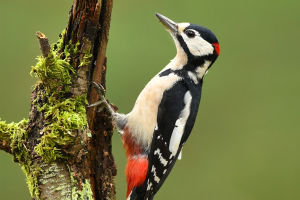The light trails of traffic have seemingly become one of the must-shoot subjects in urban night scenes, maybe most people would try their hand at capturing them, especially given the various advanced technologies available in both DSLR cameras and smartphones. However, have you truly captured them well?
Of course, it's not that simple. Besides the basic shooting, factors like the cleanliness of the composition, shaping the traffic into smooth lines, mitigating the impact of pedestrian movement on the composition, and composing the scene effectively, all require certain skills.
1. Choosing the Location (Road Segment)
Never underestimate this point; the choice of location is crucial and may even determine the success or failure of your work. The color, quantity, and shape of the light trails are closely related to factors like traffic volume and shutter speed.
Light trails are captured using long exposure photography, so to avoid interference from other light sources, it's advisable to avoid roads with many streetlights or tall buildings. Additionally, try to avoid traffic lights and congested areas to ensure that your light trails are dynamic.
To better showcase the beauty of light trails, shooting at bends in the road can make the effect more pronounced, or try shooting from elevated positions.
Moreover, direct headlights from oncoming traffic can hinder the shot. It's generally better to choose a one-way street and shoot along the traffic flow or shoot from a side angle.
It's important to note that if the lens isn't cleaned before shooting, combined with a relatively wide aperture and a telephoto lens, lens flares can form under the glare of headlights, making post-processing particularly troublesome. Using a wide-angle lens and a smaller aperture can effectively reduce lens flare.
2. Shutter Speed is Key
To prevent the light trails from leaving ghost images and to form clear lines, shutter speed plays a significant role. A tripod and a shutter release cable are essential.
When the shutter speed is set to 2.5 seconds, the cars leave noticeable ghost images; when the shutter is set to 8 seconds, the trails form clear lines.
The speed of the shutter will directly affect the thickness and length of the light trails. In the process of practice, it's recommended to try different shutter speeds for a more intuitive understanding.
3. How to Avoid the Impact of Stopped Cars and Pedestrians on the Image Quality?
When there's heavy traffic, stopping people or cars can create some double exposures or halos.
Conversely, vehicle headlights traveling in the opposite direction can directly hit the lens, degrading image quality. You can use the technique of "waving a dark card," which essentially involves using a piece of cardboard, plastic, or black velvet with poor reflective properties. Even a black hat or gloves can serve the purpose.
4. Composition Layout to Enhance Aesthetics
Light trails from traffic serve as excellent visual guides, with the viewer's gaze often following them from one end of the frame to the other. When composing, try to maximize the visual guiding effect of the light trails, guiding the viewer's gaze across the entire frame to enhance the depth of the image.
The contrast between motion and stillness can also yield excellent results. Including stationary objects in the frame can make the light trails appear more dynamic.
When comparing motion and stillness, consider the proportion of stationary objects in the frame. If the proportion of stationary objects is too small, the contrast may not be noticeable; if it's too large, the presence of the light trails may be diminished, possibly resulting in a loss of focus.
Shooting from a low angle positions the light trails higher in the frame, bringing them closer to the viewer's psychological distance and greatly enhancing the viewer's sense of presence and immersion.
Additionally, the perspective effect is strongest at near-horizontal angles. The shape of the light trails, with objects appearing smaller in the distance and larger up close, provides a clear interpretation of the concept of "speed," enhancing the dynamism of the image.
Reminding everyone that shooting light trails always involves being close to the road is important, so safety should be a top priority. Don't just focus on the viewfinder without considering the surrounding environment. It's best to choose locations with protective railings for shooting to ensure safety.
Photographing light trails is relatively beginner-friendly. Not only is the location selection relatively easy, but the shooting process is not too difficult either, making it a subject where a sense of achievement can be easily gained. After reading this article, believe that as long as you practice more, you can capture envy-worthy light trail photographs!


